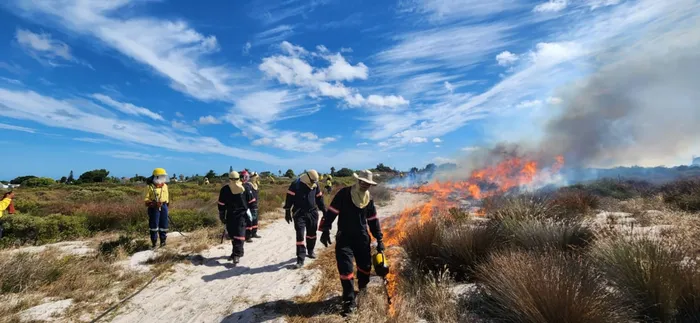City to conduct ecological burns

Members of the City of Cape Town’s biodiversity management branch and partners conducting an ecological burn.
The City of Cape Town’s biodiversity management branch and partners will be conducting ecological burns at various nature reserves in February, March, and April.
The ecological burns area for the far south is three hectares of the Muizenberg East private conservation area.
The City’s mayoral committee member for spatial planning and environment, Eddie Andrews said the dates will be dependent on weather conditions.
Ecological burns, he said, are vital to the functioning and preservation of natural vegetation, as well as reducing fire risk.
He said the burns are necessary to maintain maximum species diversity.
“Heat and smoke generated by fires also provide the critical stimulation, which many of our unique fire-dependent plant species require to germinate,” he said.
While fires that occur too frequently can lead to a decline in slow-growing species and reduced seed production, he said withholding fire for a long time will lead to bush encroachment and the local extinction of species.
“It is also imperative to ensure that there is a mosaic of different veld ages where possible. Another advantage of burning old vegetation is that it reduces fuel loads, which in turn reduces the risk of wild fires,” he said.
In addition to fynbos and renosterveld regeneration, ecological burns are also used as a tool for restoration — as a first treatment for invasive plant clearing, and to restore habitat for critically endangered species, such as the Ranger butterflies (Kedestes spp).
For more information, contact about ecological burn, email Biodiversity@capetown.gov.za and to report a wildfire, contact the City’s fire and rescue and emergency services on 021 480 7700.
Related Topics: